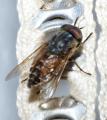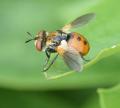Diptera.info :: Identification queries :: Diptera (adults)
Who is here? 1 guest(s)
|
villa sp. strange behaviour
|
|
| treebeard |
Posted on 16-07-2014 21:29
|
|
Member Location: Slovakia Posts: 610 Joined: 13.08.13 |
Hi all, today I saw surprising view. Many Villa individuals were flying over and sitting on field road. They sat rather actively and were "vibrating" and touching the surface by the tip of abdomen. Could it be ovipositing? If yes, I wonder what will larvae do on bare road surface. The number of Villa individuals was quite high, tens, maybe hundreds. Is it possible to determine species? Slovakia, Banska Bystrica, 16 July 2014, 450 m.a.s.l, area of the contact of limestone with tertiary alluvial clays. treebeard attached the following image: 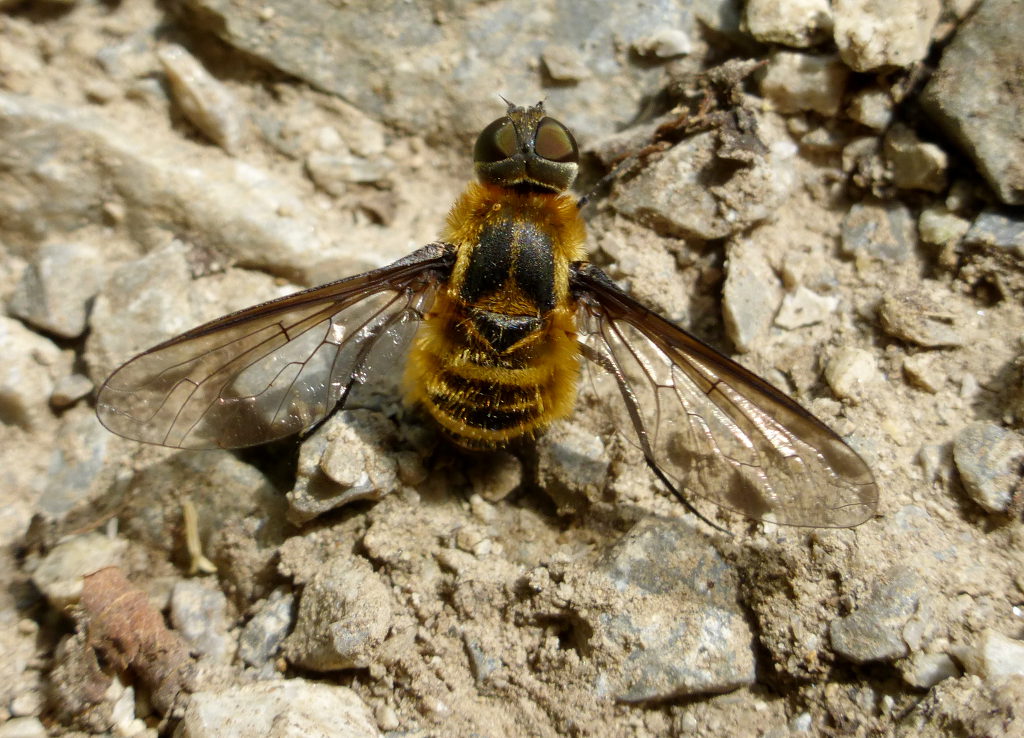 [193.08Kb] |
|
|
|
| treebeard |
Posted on 16-07-2014 21:31
|
|
Member Location: Slovakia Posts: 610 Joined: 13.08.13 |
not the same specimen, but the same event:
treebeard attached the following image: 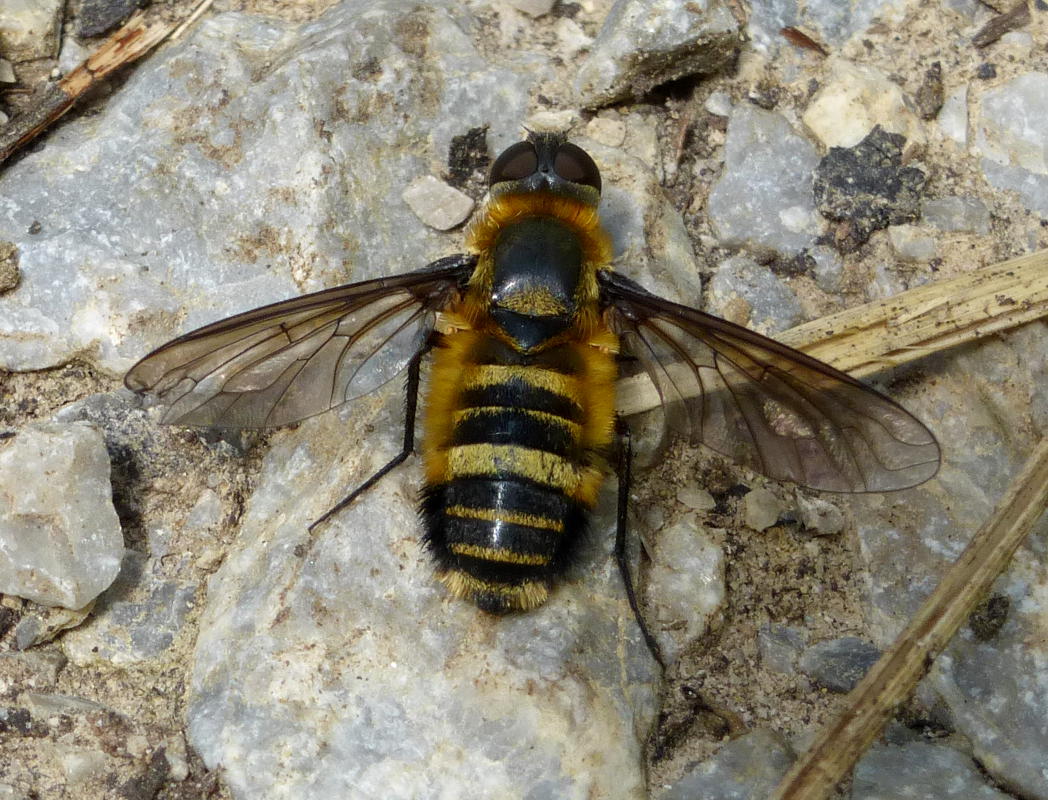 [192.44Kb] |
|
|
|
| treebeard |
Posted on 16-07-2014 21:32
|
|
Member Location: Slovakia Posts: 610 Joined: 13.08.13 |
and one more:
treebeard attached the following image: 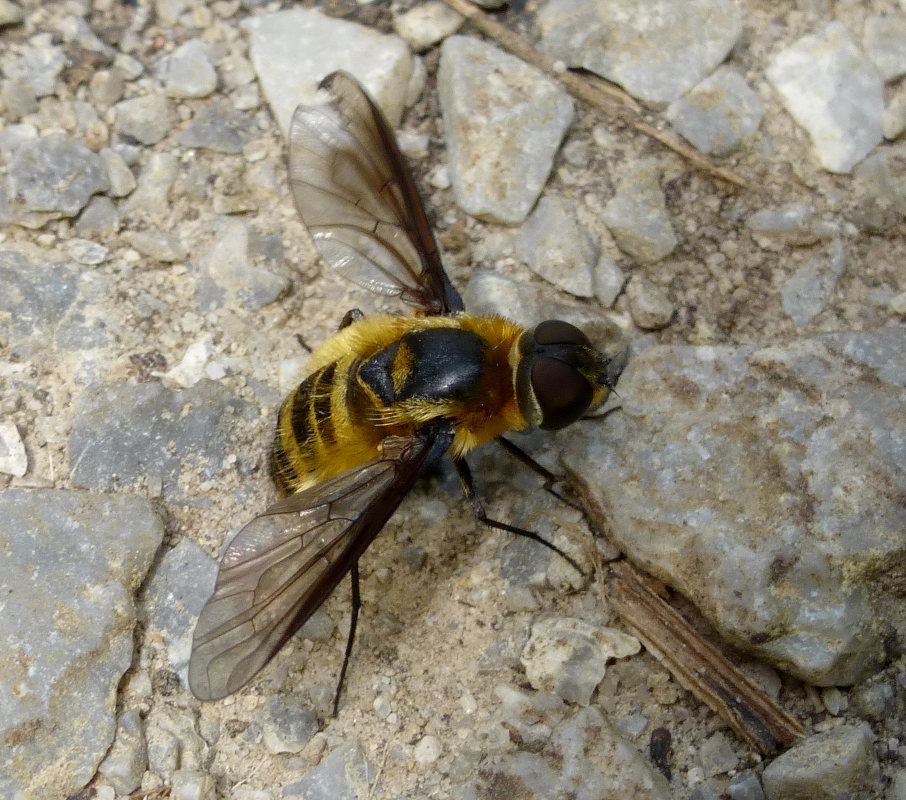 [192.09Kb] |
|
|
|
| treebeard |
Posted on 16-07-2014 21:33
|
|
Member Location: Slovakia Posts: 610 Joined: 13.08.13 |
and other one:
treebeard attached the following image:  [192.93Kb] |
|
|
|
| John Carr |
Posted on 17-07-2014 13:30
|
|
Member Location: Massachusetts, USA Posts: 9841 Joined: 22.10.10 |
Females of most "higher bee flies", including Villa, have a "sand chamber." They land on sandy ground to pick up sand. They coat eggs with sand, probably to prevent dessication. |
| ValerioW |
Posted on 17-07-2014 13:44
|
|
Member Location: Padova - Italy Posts: 982 Joined: 01.06.12 |
As John told the higher bee flies have sand chamber, and probably the last photo shows a female that is getting sand to coat its eggs, or maybe is laying eggs near a suitable host (Villa sp. like different hosts like caterpillars). |
|
|
|
| treebeard |
Posted on 17-07-2014 17:59
|
|
Member Location: Slovakia Posts: 610 Joined: 13.08.13 |
John, Valerio, thank you. Coating the eggs would probably be the reason. I do not thing that the behaviour was caused by the presence of host, I am talking about too long section of field road with various vegetation around margins. The spots lighted by the sun were used, maybe to find the sand of proper moisture. What about ID, is it impossible from my pictures? |
|
|
|
| ChrisR |
Posted on 17-07-2014 18:48
|
|
Administrator Location: Reading, England Posts: 7699 Joined: 12.07.04 |
I have always thought that coating the eggs in grit will give them better 'heft' or 'carry' when they throw them ... Bombylius throw their eggs into solitary bee nests.
Manager of the UK Species Inventory in the Angela Marmont Centre for UK Biodiversity at the Natural History Museum, London. |
| Sundew |
Posted on 17-07-2014 23:43
|
|
Member Location: Berlin and Baden-Württemberg, Germany Posts: 3890 Joined: 28.07.07 |
Villa is a difficult genus! There is a fine Dutch Bombyliidae key (http://www.reposi...ent/499305), and the only species with darkened wing edges therein is V. fasciata. However, in Slovakia there might be more species... |
|
|
|
| ValerioW |
Posted on 18-07-2014 07:06
|
|
Member Location: Padova - Italy Posts: 982 Joined: 01.06.12 |
Thanks Sundew for the link you provided! I think that, considering Slovak area's climate (that is not like mediterranean type), there're chances for these keys to be useful. I'll verify the checklist! Edited by ValerioW on 18-07-2014 07:08 |
|
|
|
| ValerioW |
Posted on 18-07-2014 07:08
|
|
Member Location: Padova - Italy Posts: 982 Joined: 01.06.12 |
ChrisR wrote: I have always thought that coating the eggs in grit will give them better 'heft' or 'carry' when they throw them ... Bombylius throw their eggs into solitary bee nests. Villa are more prone to use as hosts beetle's larvae and caterpillars. |
|
|
|
| ValerioW |
Posted on 18-07-2014 07:09
|
|
Member Location: Padova - Italy Posts: 982 Joined: 01.06.12 |
in the slovak area there're 12 species of Villa. |
|
|
|
| treebeard |
Posted on 18-07-2014 07:46
|
|
Member Location: Slovakia Posts: 610 Joined: 13.08.13 |
Yes, 1997 checklist lists 12 species. V. fasciata is not included, however, circumdata Meigen 1820 is probably synonym? I know the key linked by Sundew, but for me as an amateur, it is difficult to use it. That is why I appreciate opinions from this forum. |
|
|
|
| Sundew |
Posted on 18-07-2014 10:14
|
|
Member Location: Berlin and Baden-Württemberg, Germany Posts: 3890 Joined: 28.07.07 |
V. circumdata was split into 2 species, one is V. fasciata. considering Slovak area's climate (that is not like mediterranean type) Well, the Netherlands are also not mediterranean, so this is not the reason for a maybe insufficient key  . Probably you have a problem with the language, but the illustrations are excellent. An English key you find here: http://home.hccne...villa.html. However, simply send a private message to John Smit, he is a member of our forum. He will surely help you with your thread. . Probably you have a problem with the language, but the illustrations are excellent. An English key you find here: http://home.hccne...villa.html. However, simply send a private message to John Smit, he is a member of our forum. He will surely help you with your thread. |
|
|
|
| ValerioW |
Posted on 18-07-2014 10:51
|
|
Member Location: Padova - Italy Posts: 982 Joined: 01.06.12 |
Sundew wrote: V. circumdata was split into 2 species, one is V. fasciata. considering Slovak area's climate (that is not like mediterranean type) Well, the Netherlands are also not mediterranean, so this is not the reason for a maybe insufficient key  .. ..Sundew, the full sentence is "I think that, considering Slovak area's climate (that is not like mediterranean type), there're chances for these keys to be useful."; it means that I think these key can be quite useful for Slovak area; even if we cannot ignore it has at least 7 different species. I wasn't discretiding these keys  . . |
|
|
|
| ValerioW |
Posted on 18-07-2014 10:57
|
|
Member Location: Padova - Italy Posts: 982 Joined: 01.06.12 |
Sundew wrote: Probably you have a problem with the language, but the illustrations are excellent. An English key you find here: http://home.hccne...villa.html. However, simply send a private message to John Smit, he is a member of our forum. He will surely help you with your thread. Thanks for the suggestion, you're so kind and caring Sundew!  I can deal with it ... I've already many textbooks in swedish, french, german, spanish, and some in chinese Hanyu Pinyin (mostly simplified, but some in traditional). Not to mention english books, that exceed italian books! I can deal with it ... I've already many textbooks in swedish, french, german, spanish, and some in chinese Hanyu Pinyin (mostly simplified, but some in traditional). Not to mention english books, that exceed italian books!  |
|
|
|
| treebeard |
Posted on 18-07-2014 12:50
|
|
Member Location: Slovakia Posts: 610 Joined: 13.08.13 |
Valerio, that language problem note is probably related to me, not to you  It is pretty correct, however, the main problem of amateurs with such keys is that it is quite difficult to understand quantifications such "narrow" or "extensive". I lack practical experience and thus, I can misunderstand descriptions. As for ID, the prominent Slovak dipterologist Vladimir Straka now identified my picture (not the one sent to this forum, but almost surely the same species) as Villa circumdata, which, as far as I can understand, means V. faciata, because the Villa longicornis has hyaline wings. Am I right? |
|
|
|
| Jump to Forum: |









